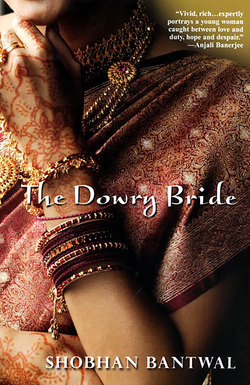Читать книгу The Dowry Bride - Shobhan Bantwal - Страница 5
На сайте Литреса книга снята с продажи.
Author’s Note
ОглавлениеDear Reader,
India has a rich and diversified culture filled with colorful folklore, gracious people, a delightful profusion of regional cuisines and breathtaking natural wonders. And yet, as shocking as it may seem to the more advanced cultures of the world, the archaic system of dowry is alive and thriving in contemporary India.
Dowry is a gift of cash, valuables and household items presented by the bride’s family to the groom at the time of marriage. It is considered a contribution toward the household expenses of the groom’s family. Although a dowry is not universal among all Indian castes and classes, there are some that practice it very strictly. To this day, it plays a significant role in many of India’s arranged marriages.
Despite a highly educated middle class, the glitzy Bollywood movie and fashion industries, the high-tech and call-center boom that is touted as India’s pride and joy, there is a shameful secret that casts a dark shadow on all those brilliant accomplishments. In spite of a federal law, the Dowry Prohibition Act of 1961, and its amendments in the 1980s, the dowry has continued to proliferate and become more entrenched.
India’s dowry system is a corrupt and decadent tradition, and yet, its advocates argue that it is merely a method of ensuring equitable distribution of a parent’s estate among daughters and sons. But when one analyzes the crude and inhuman way it is sometimes practiced, it can be viewed as a form of extortion.
As if that were not enough to qualify as a misdeed, if and when a bride’s family fails to produce the expected dowry or falls short of the promised amount, the bride is often abused or tortured or killed by her husband’s family—and, indeed, may suffer all three, in that order.
Statistics on bride abuse and bride killings are highly skewed because of a large number of cases that go unreported or undocumented. They are often brushed aside as accidents. Corrupt police officials that condone the perpetration by looking the other way serve to add to the travesty of an already distorted legal system. Allegedly, anywhere from 5,000 to 25,000 dowry brides are killed and maimed each year. There is no way to gauge the validity of any of the available statistical data.
Although The Dowry Bride is entirely fictional, some of its elements are based on facts surrounding the dowry system. In narrating the story of my young protagonist, Megha Ramnath, I often placed myself in her shoes, and as a result I experienced her fears, concerns, joys and tribulations. Notwithstanding the drama, adventure and action essential to a work of fiction, I have tried to paint a realistic portrait of a culture that is simple yet complex in many ways, abundant yet lacking in some areas, progressive yet shockingly primitive.
I sincerely hope you enjoy reading and sharing with others The Dowry Bride as much as I have enjoyed writing it.
Best wishes,
Shobhan Bantwal
